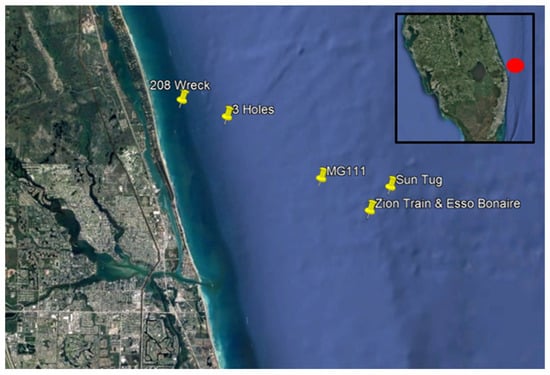CuzzA
Wetwork for Hire
Note the purpose of the Castor wreck was for fishing. But you are absolutely right. Changes in structure and the environment (food) impact where fish go.I have 129 dives on the Castor in Boynton Beach between 2009 and 2023. I have a fair idea of the number of Goliath Grouper on the Castor during aggregation and at other times. There are a number of Goliath Grouper on the Castor year round, I would estimate this number to be between a dozen or two. You will encounter them on any dive.
The number of Goliath Grouper during aggregation has varied very significantly. For me, the peak during aggregation occurred between about 2011 or 12 and 2016. During these years, there were many, many Goliath Grouper on the Castor, their location based on the current. During a brisk north current, there would be a very large number stacked up at the bow and quite a few at the stern structure. When the current was minimal, they would often group off the port bow and the port stern.
The stern structure of the Castor was knocked off to the starboard in 2012 by Hurricane Sandy in October. This did not seem to affect the Goliath Grouper aggregation. The bow of the Castor was knocked off to the starboard in October of 2016 by Hurricane Matthew. This event seemed to affect the Goliath Grouper aggregation in a very major way and the aggregation has been significantly less ever since. The bow was knocked further to the starboard by Hurricane Irma in September of 2017.
Obviously, I do not know what appears to have decreased the Goliath Grouper aggregation at the Castor, but I wonder if part of the explanation is the change in the environment due to the hurricanes. Perhaps it is just not as desirable location as it once was.
I did 3 dives on the Castor on my recent visit to Florida in September. The first dive had ripping current and poor visibility, I did not make it to the bow. The second dive was perfect, moderate current, good visibility. There were 16 Goliath Grouper stacked up on the bow, not as many as in the old days, but more than I've seen in a while. The third dive was an easy swim to the bow, but only a single Goliath Grouper.
Trip Report - Finally, back at home 2023 #2
I was last down in June, first time this year since recovering from my broken leg at the end of last year. I had a great trip to Malpelo at the end of July. I flew down from Philadelphia to PBI on Tuesday. The plane was completely full. Airport at both ends was a breeze. Effortless car rental...scubaboard.com
Before hurricane Idalia we were beating gag grouper off spots to get to other species. Bait fish all over. After the hurricane they have moved off those same spots as did the bait. Most reports now have them on the really shallow stuff or out in deeper water.





